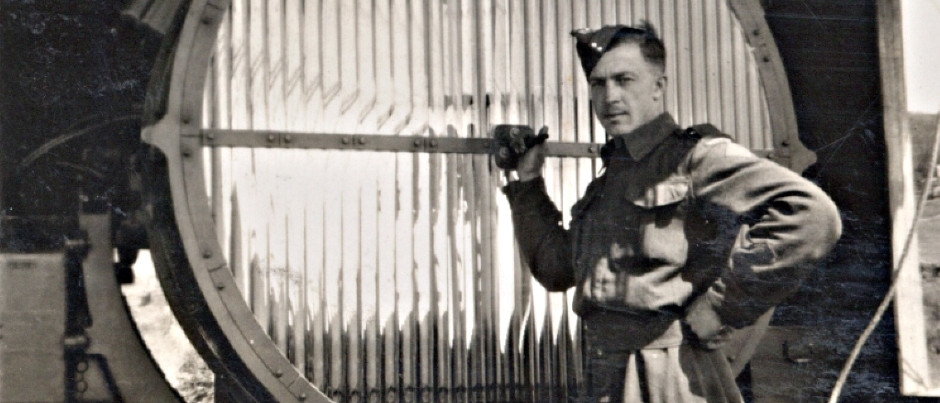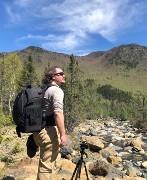The Québec maritime Blog

-
Fort Peninsula
Musée de la Gaspésie
The Battle of the St. Lawrence
World War II in Canada
Are you interested in learning about the hidden parts of history? Take advantage of a trip through the spectacular landscapes of Gaspésie to discover the remains of an all-but-forgotten battle that took place during some of humanity’s darkest hours. If you’re a history buff, you’ll want to learn more about the Battle of the St. Lawrence.
A World War II battle on Canada’s doorstep
In 1939, World War II was raging in Europe. The Allied forces opposed the Axis powers following the invasion of Poland by the Third Reich. On September 10, 1939, seven days after France and the United Kingdom had declared war on Nazi Germany, Canada entered the conflict. One of the country’s main missions was to supply Great Britain with food, weapons and equipment by sea. The Battle of the Atlantic began, with the German Navy trying to prevent the passage of ships. By 1942, German submarines (U-boats) had reached the St. Lawrence.
A new German strategy

The Battle of the St. Lawrence was part of the Battle of the Atlantic. The head of the German U-boat fleet decided that it was strategically more profitable to attack convoys in the waters of the St. Lawrence rather than on the open sea. The port of Montreal was the departure point for a quarter of the goods going to the Allies. Blocking the ships’ passage on the St. Lawrence would therefore have a decisive impact on the supplies available to the British Army. Moreover, the geography of the St. Lawrence made it easier to launch attacks in these waters. Less vast than the North Atlantic, the Gulf of St. Lawrence has only two outlets to the Atlantic Ocean: the Strait of Belle Isle to the north of Newfoundland and Cabot Strait to the south.
On the defensive

Aware of the risk of incursions by German U-boats into Canadian waters, the Canadian Navy decided to establish a naval base in Gaspé in 1940. This bay was chosen because it’s sheltered by the surrounding coastal relief, making it well positioned to defend the Gulf of St. Lawrence as well as the river. The depth of the bay also made it possible to accommodate British warships if necessary. The base was inaugurated on May 1, 1942. Named HMCS Fort Ramsay, the military complex also included three shore batteries and a huge anti-submarine net stretched across the bay. Several observation posts were built along the shores of the easternmost regions of the St. Lawrence along with a military training airfield in the town of Mont-Joli.
First attacks

The Battle of the St. Lawrence officially began the night of May 11-12, 1942, when the British merchant ship SS Nicoya was hit by German torpedoes and sank off the coast of Gaspésie, north of Pointe-à-la-Frégate. A few hours later and a little further west, the Dutch freighter Leto sank in turn. Despite the addition of air assets at Mont-Joli and North Sydney, as well as a detachment at Gaspé, numerous attacks occurred during the rest of the year. Following the loss of a dozen ships and many lives over the summer, the Canadian government decided to close the St. Lawrence to transatlantic shipping on September 9. With the arrival of the ice in the winter, calm returned to the area, but the Battle of the St. Lawrence raged on until 1944. The last ship to fall victim to the U-boats was the HMCS Esquimalt, which sank on April 16, 1945. Her attacker, U-190, surrendered to the Royal Canadian Navy a month later and joined its fleet. Eventually scuttled in 1947, U-190 sank to the bottom of the sea near the position where the Esquimalt went down.
A heavy toll

A total of 26 ships were sunk during the Battle of the St. Lawrence, including 21 off the coast of Gaspésie. Nearly 300 people lost their lives to German submariners. The coastal population was forever marked by this experience. Many fishermen witnessed the presence of the Nazis at sea, while the local inhabitants were subjected to curfews and lights out. The explosions, as well as the sight of survivors swimming for miles, remain in the memories of those who were there, as they wait for time to do its work.
Traces and memories

Still today, traces of the Battle of the St. Lawrence remain visible. First, you can learn more by stopping at the Cap-Chat rest area along Route 132, on the northern side of the Gaspé Peninsula. Since 2017, several interpretive panels have been installed near the beach to explain the events that occurred off the coast, where many ships sank. Further east, you can visit Fort Peninsula in Forillon National Park to learn more about these dark hours. (This attraction is open to the public free of charge.) In addition to discovering a wealth of information, you can visit a half-buried site with several rooms, including shell stores and powder magazines. The highlight of your visit will undoubtedly be seeing the two enormous cannons that were part of the defensive structures built at the time.
Were you surprised by this all-but-forgotten part of history? Discover other surprising facts about the St. Lawrence!

(0) comment